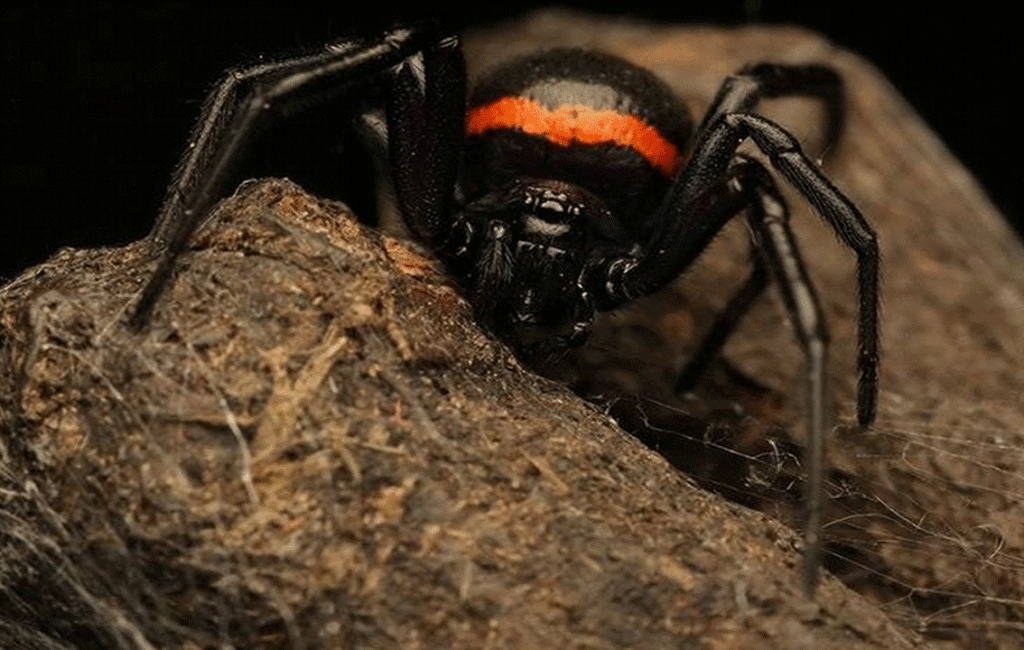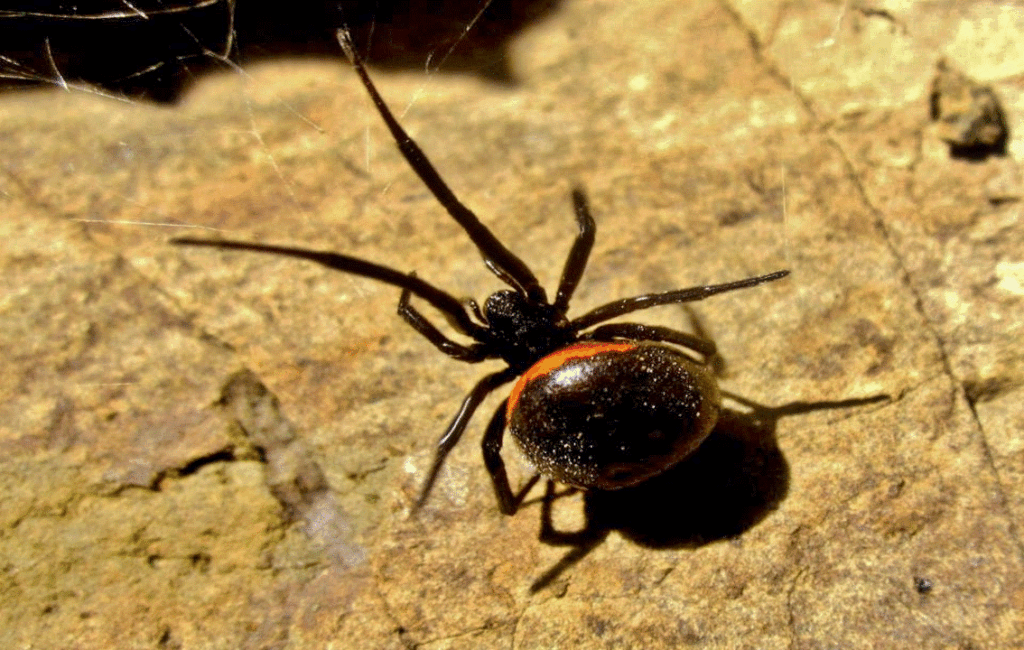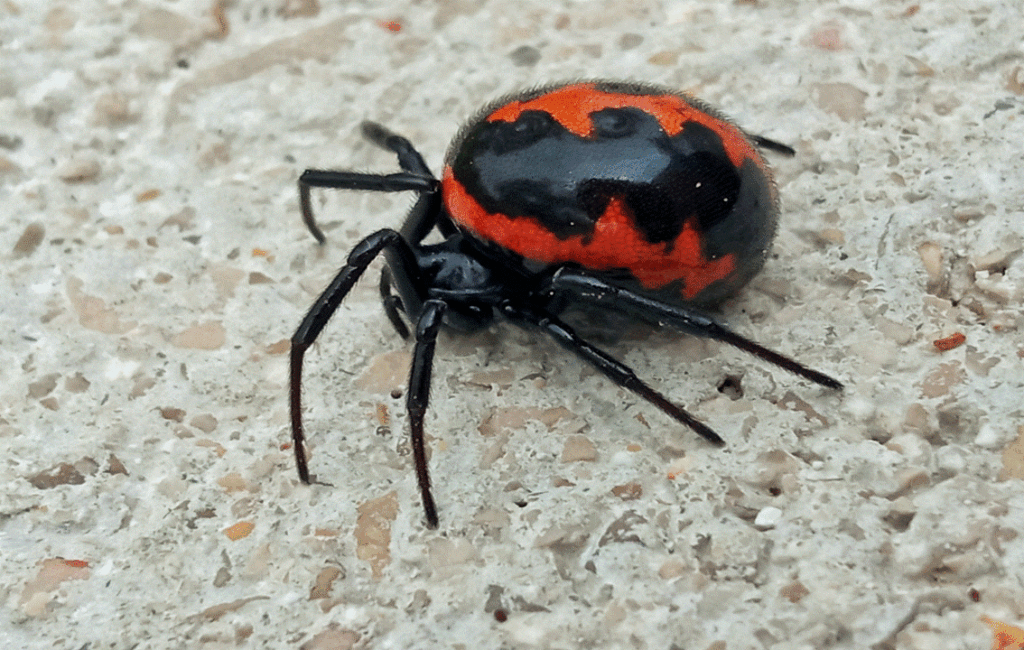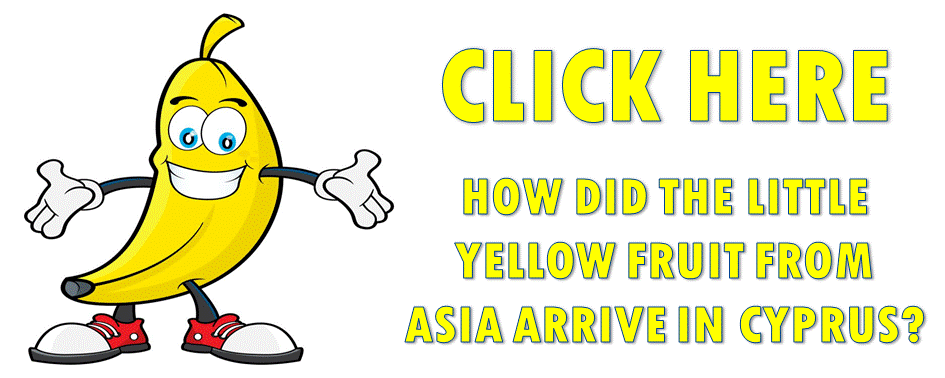IS THIS SPIDER DANGEROUS?
INCREASED SIGHTINGS IN CYPRUS
Increased sightings of the Mediterranean False Black Widow Spider in Cyprus, have generated an increased curiosity of the shiny black spider among residents and visitors alike. This has drawn attention to the myth that these arachnids are potentially dangerous to humans. This has led to fear and unease among people on the island, especially those who come across these spiders in their homes or gardens. This spider, although harmless to humans, is similar in appearance to and is often mistaken for the slightly larger more venomous Black Widow Spider. Whilst it shares the same shiny black rounded-abdomen and web-making traits as the Black Widow, this spider is slightly smaller and does not have the red hourglass marking, which identifies the far more dangerous Black Widow. It does, however, have two distinct bright red bands across its abdomen, which sometimes are difficult to interpret.
A MEDITERRANEAN NATIVE
The Meditteranean False Black Widow Spider is native to most Mediterranean countries. Although these spiders prefer favourable warm seasonal climates, they are also found in Southern Europe and Western Asia. The Spider usually seeks sloping ground covered with vegetation. This allows it to easily spin its three-dimensional tangled web to catch prey.

The female can typically have a body length of around 8 mm. This expands to up to 12 mm when pregnant. Once eggs are laid, the female spins its web creating a cocoon around its eggs for protection. The spiderlings usually start to hatch at the beginning of autumn. They then typically drop down onto the vegetation along with cocooned prey to feed. They then seek appropriate places to hibernate during the winter, re-emerging as adults at the end of the next spring. Early spring is also a time when these young spiders search not only for prey but for a mate. The distinctive bands on a young female are pale yellow. These gradually turn orange as the spider matures eventually becoming bright red when the spider reaches adulthood. The male is only about half the size of the female, with less prominent markings.
A LESS POTENT VENOM
Mediterranean False Black Widows will only bite if disturbed. Spiders that feel threatened will also attack with a bite. Their venom, however, is far less potent than that of the contemporary Black Widow but has been known to incapacitate small mammals such as rodents.

A BITE OF MINOR IRRITATION
If a human is bitten, the bite will cause minor irritation similar to that of a wasp sting. While their bite is not life-threatening, it can cause pain and swelling in humans. Bites from this spider should be treated like any other bite or sting.
DO NOT SCRATCH THE ITCH
Steps should be taken immediately to ensure that the wound does not become infected. The wound should be cleaned and a mild disinfectant should be applied to the affected area. Scratching the itchy wound will increase the risk of infection. Increased swelling or excessive blistering or pus in the wound, may indicate that it has become infected. In this event, local medical services should be notified.
CONTROLLING INSECT POPULATIONS
Ongoing efforts are being made to educate the public about the Mediterranean False Black Widow Spider in Cyprus. People are constantly reminded that this spider poses no threat and that it plays an important role in Cyprus’s eco-system. Like all spiders, it helps control insect populations, which in turn balances local ecology on the island. Information campaigns, workshops, and outreach programs have been used in the past to raise awareness about these spiders. This have included their behavior and the precautions that can be taken to minimise encounters with them, promoting co-existence.

SPARING A THOUGHT
It is known that their numbers on the island have increased, meaning that encounters with this otherwise unassuming arachnid are more likely. This spider is identifiable by its two distinctive bright red bands across its black shiny torso. Those that happen to cross paths with this little black spider should spare a thought for it and remember that it does not pose a threat to humans. This spider will only bite if provoked.


